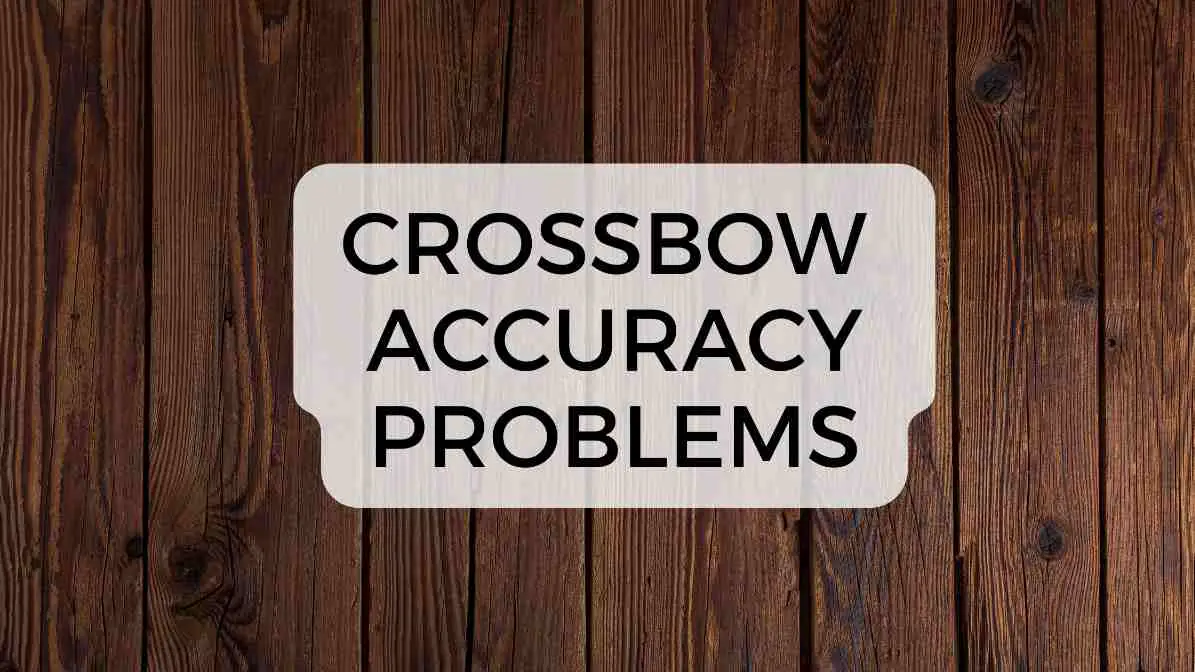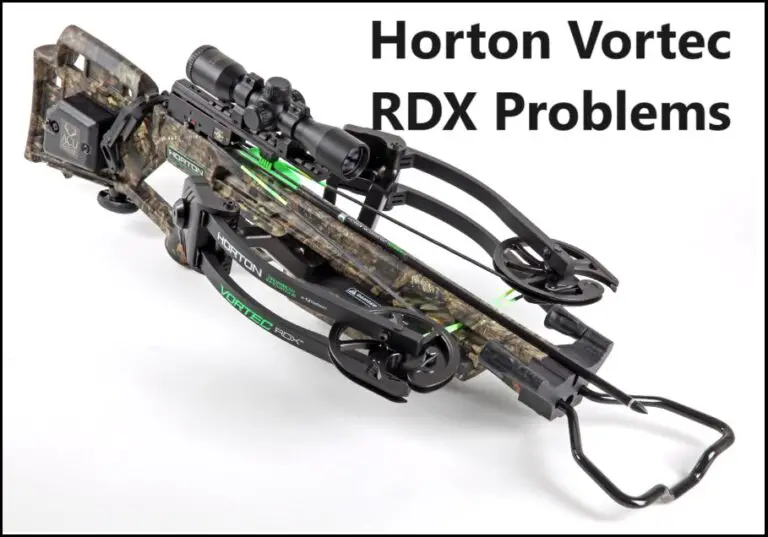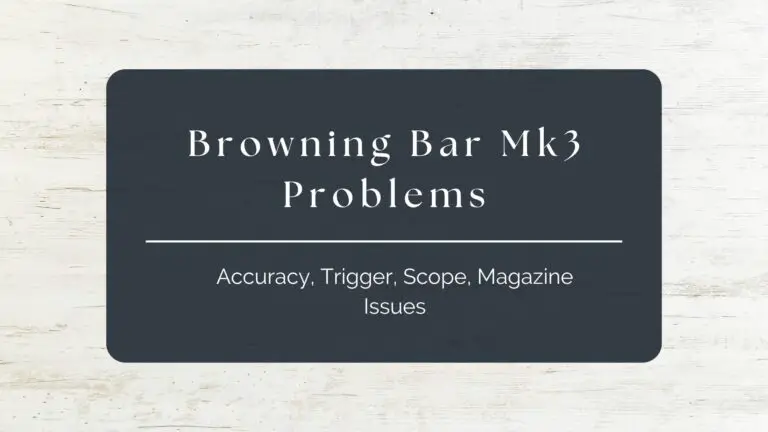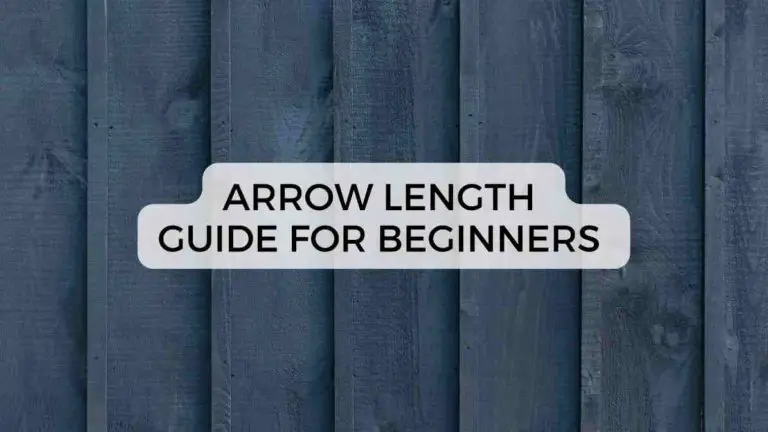CROSSBOW ACCURACY PROBLEMS (8 FACTORS THAT AFFECT IT)
Crossbow accuracy problems depend on many factors. The majority of manufacturers pre-sight their crossbows before shipping them. These crossbows generate reliable bull’s-eyes right out of the box at 20, 30, and 40 yards when they are cocked correctly, using the right bolt and the right shooting technique.
To achieve pinpoint accuracy or meet your own standards, you might need to make a few adjustments, but as long as you stay within the advised range parameters, accurate hand grip and dead-deer shots should be no problem.
Read here about the Crossbow Hand Placement: The Best Technique to Prevent Hand Injuries!
You may acquire and maintain consistent crossbow accuracy by considering a few factors. Although some utilize the bow, the shooter is at each center. These factors all cause crossbow accuracy problems. In this blog post, you will read about these factors deeply.
Factors That Cause Crossbow Accuracy Problems
1. Wrong Bow
The first factor who cause Crossbow accuracy problems is the wrong bow. Crossbows exist in a variety of forms and dimensions for good reasons. You see, there is no such thing as a universal crossbow, just like there is no universal hunting weapon.
In this sense, different crossbows are made for various user types. The hunter next door and I may not be able to use what works for you. A crossbow that does not feel too heavy, long, or wide is the ideal crossbow for deer hunting.
The accuracy will suffer if you find it difficult to pull the bow you’re using. The trigger should also be clean and precise. Therefore, the fact that the bow you are using is inappropriate for you could be the cause of your crossbow’s decreased accuracy.
2. Wrong Arrows Cause Crossbow Accuracy Problems
Do you have the appropriate arrows, even if your crossbow is perfect for you? The manufacturers know the best arrows for crossbows of such bows. It is crucial that you follow the arrows that the manufacturers provide.
- Arrows with particular materials, fletching lengths, and nock types are advised by crossbow manufacturers. You might be missing the target because of the arrows you are using.
- Although lighter arrows do fly quicker, speed alone does not guarantee accuracy. Use an arrow that the manufacturer suggests using.
3. Improper Cocking
Crossbows must be cocked before being used to discharge an arrow, much like any other mechanical hunting weapon. Considering this, the accuracy of your bow will depend on how you cock it.
Your bow’s serving should be centered and have equal lengths on both sides of the rail when it is fully cocked. If it is off by even 1/6 inch, you risk missing the mark. And the further off-target it is, the longer the range.
When the string is at rest, you should use a marker or felt tip to mark the serving. This will enable you to use a visual cue as a reference while cocking. Using the designated areas, you may maintain an equal serving on both sides of the rail. The manual cocking of some bows is another factor that can affect your bow’s accuracy.
4. Poor Maintenance
Poor maintenance is another factor who cause Crossbow accuracy problems. Metal bolts and screws are used to assemble the mechanical components of crossbows. Furthermore, these bolts will inevitably loosen as a result of the severe conditions we subject our prized bows to.
The bolts holding your bow together could loosen up with time and repeated use. You might as well bid your bow’s accuracy farewell when this occurs.
Both improper maintenance and wear and tear might be held responsible for loosening bolts and screws.
Steps To Avoid This Problem
- Regular bow inspections are necessary to make sure everything is working correctly.
- Before going on a hunting excursion, you should always check the bolts connecting the stock to the bow and the bolts holding the sight to the bow.
- To ensure that all of these significant bolts are firmly fastened, you should take this action.
- Another crucial step is to examine the flight rail.
5. Poor Holding and shooting
Crossbows are far more advanced today than they once were. Even though contemporary crossbows are lighter than earlier models, good handling is still necessary.
Because you are holding the bow incorrectly, you might occasionally miss the target. Improper trigger handling is one of the things that could be making you miss.
Important Step To Avoid This Problem
Your crossbow trigger should be pulled, not pressed. The entire bow will move when the trigger is pulled, which reduces accuracy.
6. Improper Lining Can Also Cause CROSSBOW ACCURACY PROBLEMS
Cantering, or having one limb lower than the other when firing, is a significant accuracy issue. It is essential to maintain the limb level parallel, or on the same plane as the ground.
The accuracy of a bow directly relates to how well it fits you. A bow is generally not suited for you if it feels too heavy, is too long, or is too wide.
The bow will shoot to the left if the left limb is lower than the right. The right limb will shoot to the right if it is lower than the left. And depending on the range, it will shoot either high or low in either scenario.
How To Resolve This Issue To Avoid Crossbow Accuracy Problems?
It takes practice and focuses to solve this issue, which is challenging when a four-legged target is nearby. But maintaining consistent crossbow accuracy is crucial.
7. The Scope
Scopes are now a part of every crossbow. However, not every scope is intended for use with crossbows. In fact, you can constantly be missing the target because you are utilizing the incorrect scope.
Something with a 1-inch tube and 32 mm optical lens is an excellent benchmark since it will perform well in low light. High-powered magnification is unnecessary given the limited firing range of a crossbow, but a 1- to the 4-X variable will aid in quicker target acquisition and identifying the game’s vitals at close and long ranges. A broad field of view is also advantageous.
A sight with parallax-free or adjustable parallax out to 35 or 50 yards can greatly increase accuracy and enhance your crossbow experience. Finally, every crossbow scope should consider the trajectory of the arrow.
Crossbow Scope Types
The two most common crossbow scope types are multi-dot, and multi-crosshair and the majority of them have illuminator adjustments. However, at maximum range, the dots have a tendency to conceal the target area.
Multi-dot models are effective for making holes in targets and gaming. In some lighting situations, they appear to wash out the field of view even on the lowest level.
8. Range
Crossbows are not intended for shooting at great distances. Most bows have a basic 40-yard range. Crossbows will suffer if they are used beyond that. To dispatch wildlife swiftly and compassionately, it is crucial to be aware of your target’s range. However, not all hunters have the ability to judge range well, or at least not effectively enough to resolve crossbow accuracy problems.
Crossbow Accuracy Problems–Conclusion
Crossbow manufacturers take great care to ensure their products are reliable, dependable, and safe, but any machine is susceptible to malfunction for various reasons. If you keep in mind the above factors, you can eliminate crossbow accuracy problems. For more help, visit here.





